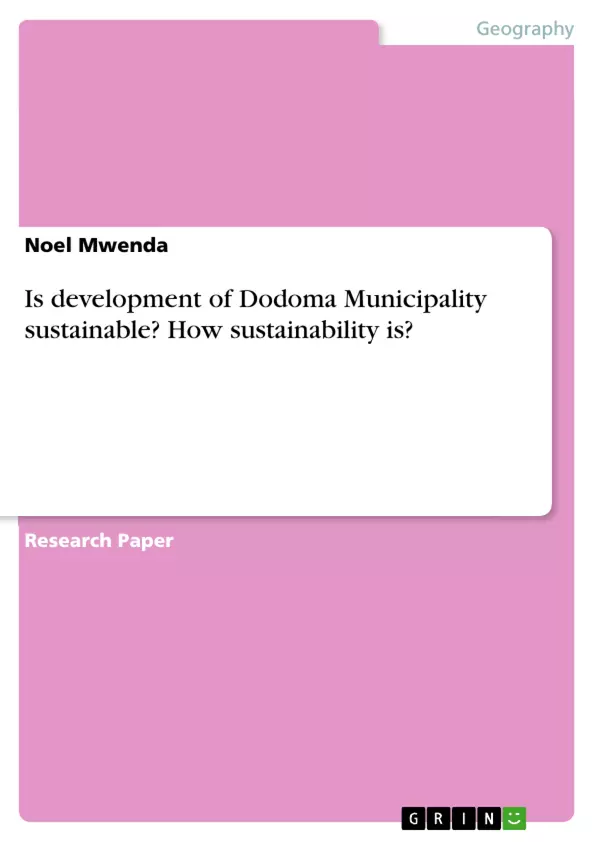The study was conducted at the area along (Dodoma-Arusha Road) from Institute of Rural Development Planning to Down Town Dodoma Municipality to assess whether development can be sustainable and how this sustainability is maintained. An organized walk was set along the road and plot was designed at an interval of 200 meters. Any observed condition leading to unsustainability was recorded, also settlement type, vegetation types, drainage systems condition, roads' condition, livestock and crops found along were recorded as well. Computer programs including macro-soft excel, macro-soft word were used during data collection and analysis. The study revealed that even the drainage systems and roads around higher institutions like IRDP were not well maintained. The road maintenance including concrete and tarmac road had some implications of lowering sustainable development as drainage systems were not directed and maintained properly, off roads were prominent at the earth road from IRDP to a stop called Mwisho wa Lami around Miyuji street along the study area. The area was also, occupied by mostly exotic trees which is an indication that the natural vegetation scenery is no longer existing. Overgrazing around settlement and open spaces found along the whole road with distance of 5km was very alarming, this was done mostly during weekends, after office working hours and night hours, an indication that land use suitability is not implemented and hence sustainable development is withered. Sewage systems are not constructed around Miyuji area and thus the community is vulnerable to deadly diseases like diarrhea and Typhoid. The recommendation for the study were also made.
Inhaltsverzeichnis (Table of Contents)
- ABSTRACT
- KEYTERMS
- INTRODUCTION
- Background information
- Brief historical change of Dodoma from the previous up to now
- Development Sustainability Possibilities and how sustainable we are
- Challenges facing Sustainable Development
Zielsetzung und Themenschwerpunkte (Objectives and Key Themes)
This research aims to evaluate the sustainability of development in Dodoma Municipality, focusing on how sustainability is maintained within its urban landscape. Through a series of observations and data analysis, the study seeks to understand the impact of human actions on the local environment and the implications for future development.
- The impact of development on the environment and natural resources in Dodoma Municipality.
- The role of infrastructure development in promoting or hindering sustainable practices.
- Challenges to sustainable development in Dodoma Municipality, including population growth, resource ownership, and industrial expansion.
- The importance of incorporating sustainable development principles into urban planning and infrastructure design.
- The need for community involvement and government initiatives to promote sustainable practices.
Zusammenfassung der Kapitel (Chapter Summaries)
The study begins with an overview of the concept of sustainable development and its implications for the present and future generations. It then delves into the historical evolution of Dodoma Municipality, highlighting the shift from a naturally vegetated area to a rapidly developing urban center. The research focuses on the sustainability possibilities and challenges of development, considering factors such as population growth, industrial expansion, and resource management. It explores the challenges of sustainable development in Dodoma Municipality, highlighting key factors like population growth, social structures, industrial expansion, and resource ownership.
Schlüsselwörter (Keywords)
This research focuses on the core concepts of development, sustainability, urban planning, environmental impact, infrastructure development, and community involvement. Key themes explored include population growth, resource management, and the challenges of balancing economic growth with environmental preservation.
- Arbeit zitieren
- Noel Mwenda (Autor:in), 2011, Is development of Dodoma Municipality sustainable? How sustainability is?, München, GRIN Verlag, https://www.grin.com/document/191469



